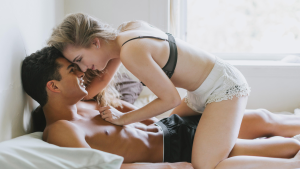
Pine straw mulch is a popular choice for gardeners due to its aesthetic appeal and natural benefits. However, several misconceptions surround its use, leading many to question its effectiveness. In this article, we’ll debunk the most common myths about pine straw mulch and provide insights to help you make informed decisions. For those looking pine straw in Cumming, you can find high-quality options.
Myth 1: Pine Straw is Harmful to Plants
The Truth About Pine Straw and Soil Acidity
One of the most persistent myths about pine straw mulch is that it makes the soil overly acidic, which can harm plants. While pine straw is slightly acidic, it does not significantly alter soil pH when used as a top layer. The minimal acidity can even benefit acid-loving plants like azaleas, hydrangeas, and blueberries. Regular soil testing and amendments can ensure a balanced soil environment for all types of plants.
Myth 2: Pine Straw is a Fire Hazard
Understanding the Fire Risks
Another common concern is that pine straw is a fire hazard. While it is true that dried pine straw can ignite, proper placement and maintenance significantly reduce the risk. Avoid placing pine straw directly against structures or in areas prone to sparks. By following these safety measures, you can enjoy the benefits of pine straw mulch without worry.
For advice on maintaining your mulch, check out this blog to determine whether refreshing or replacing is the better choice for your landscaping.
Myth 3: Pine Straw Does Not Last Long
Durability and Longevity of Pine Straw Mulch
Some believe pine straw breaks down too quickly and requires frequent replacement. In reality, high-quality pine straw is durable and can last six months to a year with proper care. Raking and fluffing the mulch periodically can extend its lifespan while maintaining its appearance and functionality.
Myth 4: Pine Straw Attracts Pests
Separating Fact from Fiction
There is a misconception that pine straw mulch attracts pests like termites. However, pine straw is less likely to harbor pests than wood-based mulches. Proper installation, ensuring it doesn’t touch wooden structures, further reduces the likelihood of pest issues.
Learn more about the practical advantages of pine straw in landscaping through this informative guide on the benefits of pine straw mulch.
Myth 5: Pine Straw is Harder to Spread than Other Mulches
A Simple Mulching Solution
While spreading pine straw may initially seem more labor-intensive than wood chips or bark mulch, its lightweight nature makes it easier to transport and spread. With a little practice, homeowners and landscapers alike can master the art of evenly distributing pine straws, ensuring efficient coverage and excellent weed suppression.
Benefits Beyond the Myths
Pine straw mulch offers numerous advantages, including moisture retention, erosion control, and weed suppression. By debunking these myths, it becomes clear why it is a go-to choice for many gardeners. Understanding how to properly use and maintain pine straw can maximize its benefits and keep your garden thriving.
FAQs
Q: How often should I replace pine straw mulch?
A: Pine straw mulch typically lasts six months to a year. Raking and fluffing can extend its lifespan.
Q: Is pine straw safe for vegetable gardens?
A: Yes, pine straw is safe for vegetable gardens. Its slight acidity has minimal impact and is often beneficial for soil health.
Q: How do I prevent pests with pine straw?
A: Install pine straw mulch at least 6 inches away from wooden structures to avoid attracting pests.
By understanding the facts and dispelling these myths, you can confidently incorporate pine straw mulch into your landscaping strategy.






